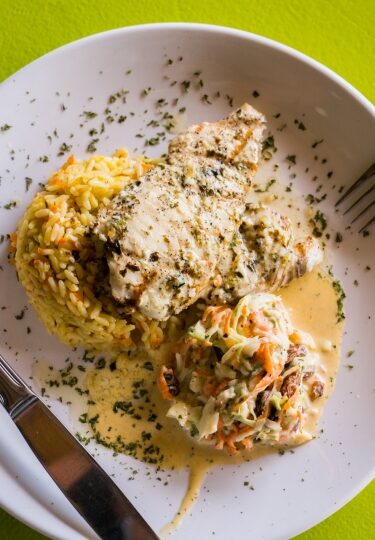With so many islands surrounded by fish, and a mix of so many cultures adding flavor to each dish, the choice of Caribbean seafood dishes to try is endless.
Indigenous peoples were cooking seafood long before Spanish, French, and British colonists arrived with their recipes and ingredients. The result is an amazing combination that can dazzle the most jaded of palates.
Many dishes have spread from one island to another, especially in more recent years. Wherever you go, you’ll enjoy Caribbean fish dishes to please the eyes, tempt the nose, and excite the mouth.
Lobster
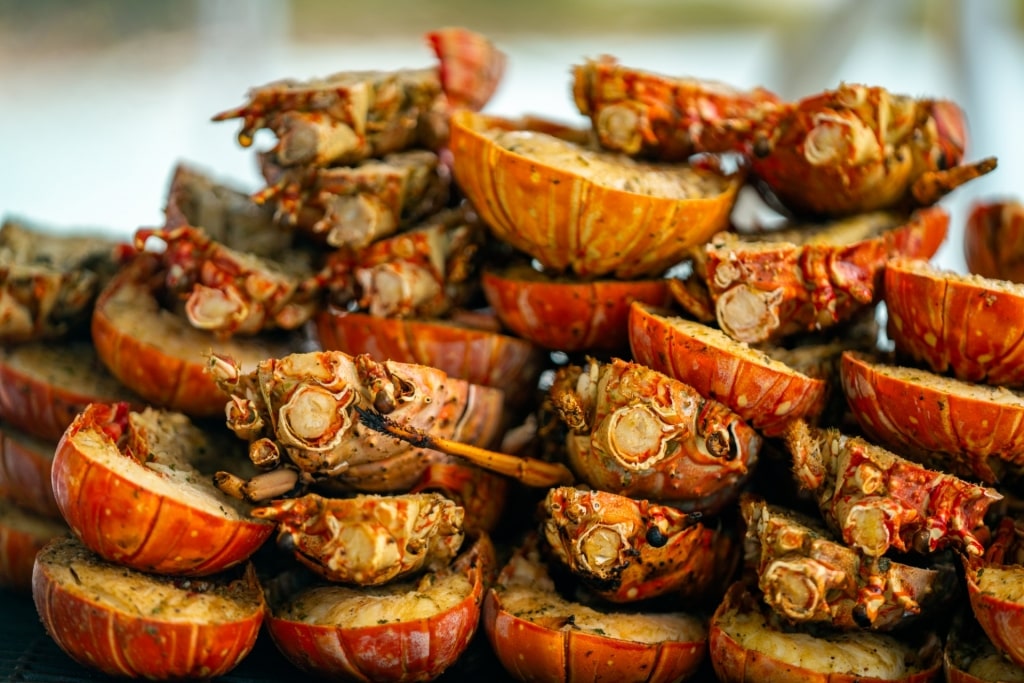
Lobsters
The Caribbean spiny lobster differs from the more familiar American/Maine lobster in not having its characteristic large claw. Many think the Caribbean species has a fishier, sweeter taste, and certainly has more meat in its tail. They are found throughout the Caribbean, from Antigua to the U.S. Virgin Islands.
This characteristic Antiguan dish is normally broiled (grilled) in lemon garlic butter. Take note that during May, and June there is a ban on lobster fishing for the mating season.
Serre
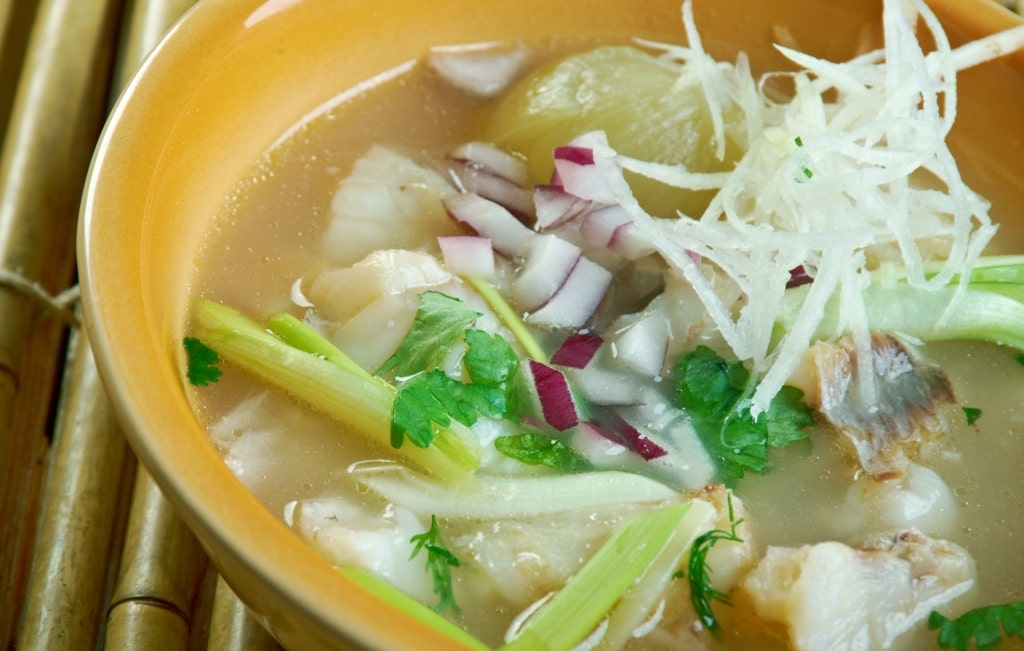
Serre
Serre, a specialty of Belize, has its roots in indigenous Garifuna cuisine. It’s a fish soup, enriched in coconut milk, onions, herbs, and spices.
You’ll also find chopped cassava and green plantain in the boiled broth. The fish, which is usually a mix of what’s freshly caught, such as grouper or red snapper, is fried in coconut oil to add more flavor.
An essential extra is a sauce made from Habanero peppers, cilantro, lime juice, and vinegar. Its added heat really brings the dish to life. Be warned that when it comes to Belizean cuisine, hot sauce is really hot.
Cassava bread and fresh plantains are the normal side dishes.
Cou-cou & Flying Fish
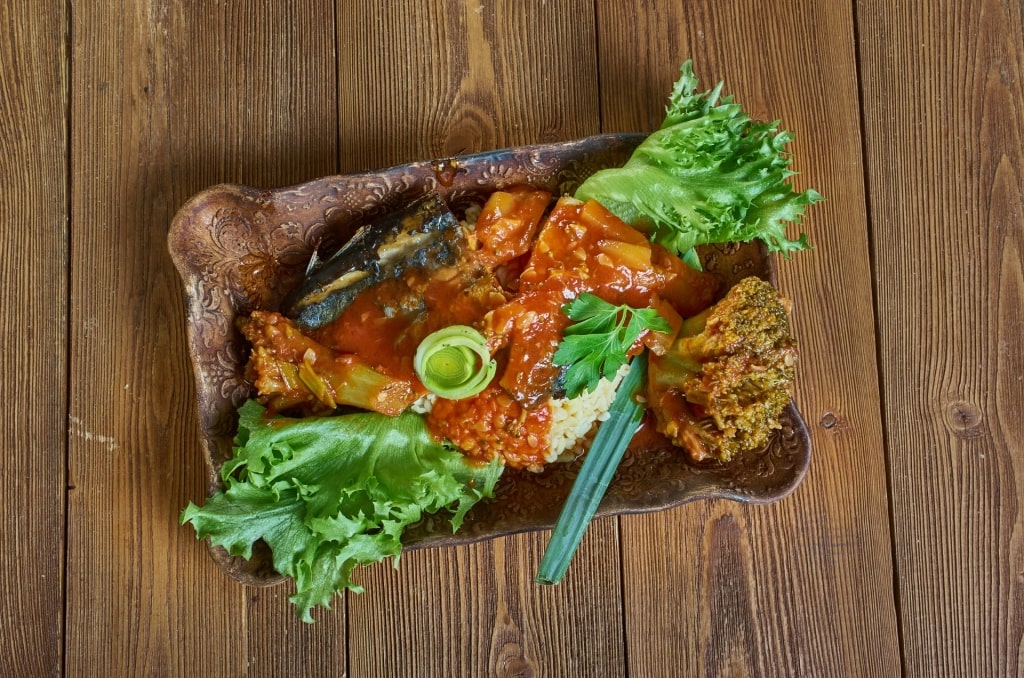
Cou-cou & flying fish
The national dish of Barbados is flying fish, either steamed or fried, with cou-cou. Cou-cou is made from cornmeal with okra, and might remind you of polenta.
Flying fish don’t actually fly, but use their elongated pectoral fins to glide. Hopefully you’ll see them in the waters around the island, “flying” distances of about 160 ft at speeds up to 40mph.
If you don’t feel up to eating a whole fish, look out for “cutters.” These are crusty bread sandwiches, with flying fish being a common filling.
Escovitch Fish
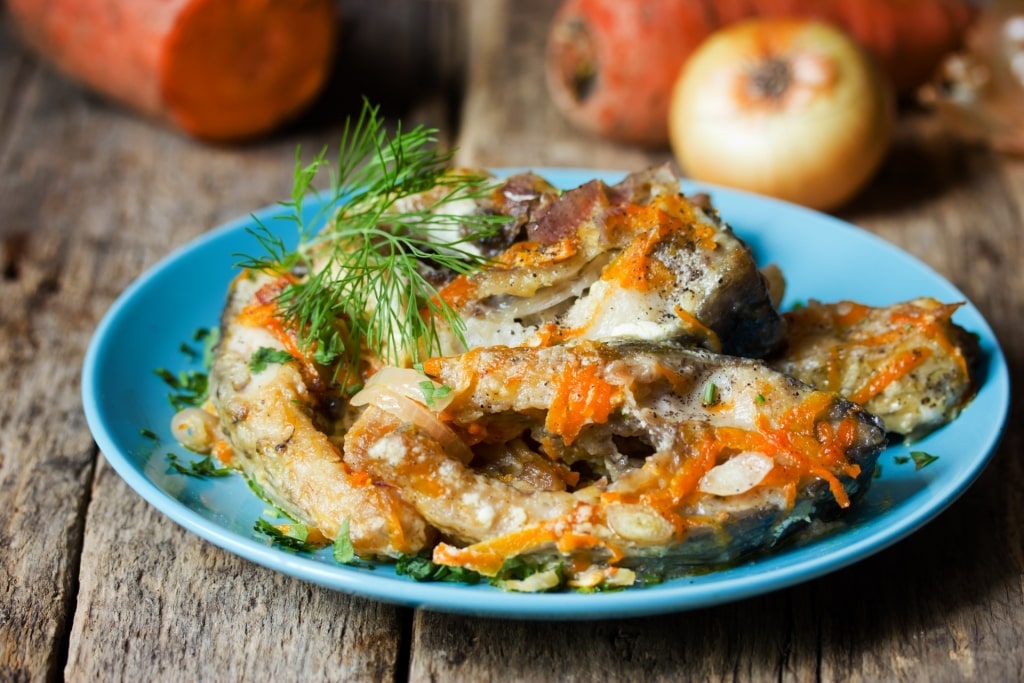
Escovitch fish
Escovitch fish has long been associated with Jamaica, with roots going far back into its history. It originated in the Spanish dish escabeche, a reminder that the island was originally colonized by Spain in the 16th century.
Escovitch is a whole fish that is pan-fried in oil, with pimento, scotch bonnet, and garlic. A sauce of peppers, thinly-sliced carrots, and onions is then added to the pan.
The dish is ideally then left to marinate overnight before you eat it. Any firm-fleshed fish can be used, such as red snapper, mullet, or even mackerel.
Dorade Grillée

Dorade grillée
Dorade—sea bream—is a fatty fish that is excellent when grilled or baked in its skin. In Martinique, it’s commonly grilled over charcoal.
The fish might be marinated first in lime juice, herbs, and seasoning. One traditional seasoning is ginger, with chili and paprika.
Be aware that smaller dorade has a lot of bones, so it’s maybe better to share a larger fish. It’s usually served with rice, potato fries, or a simple salad.
Lionfish
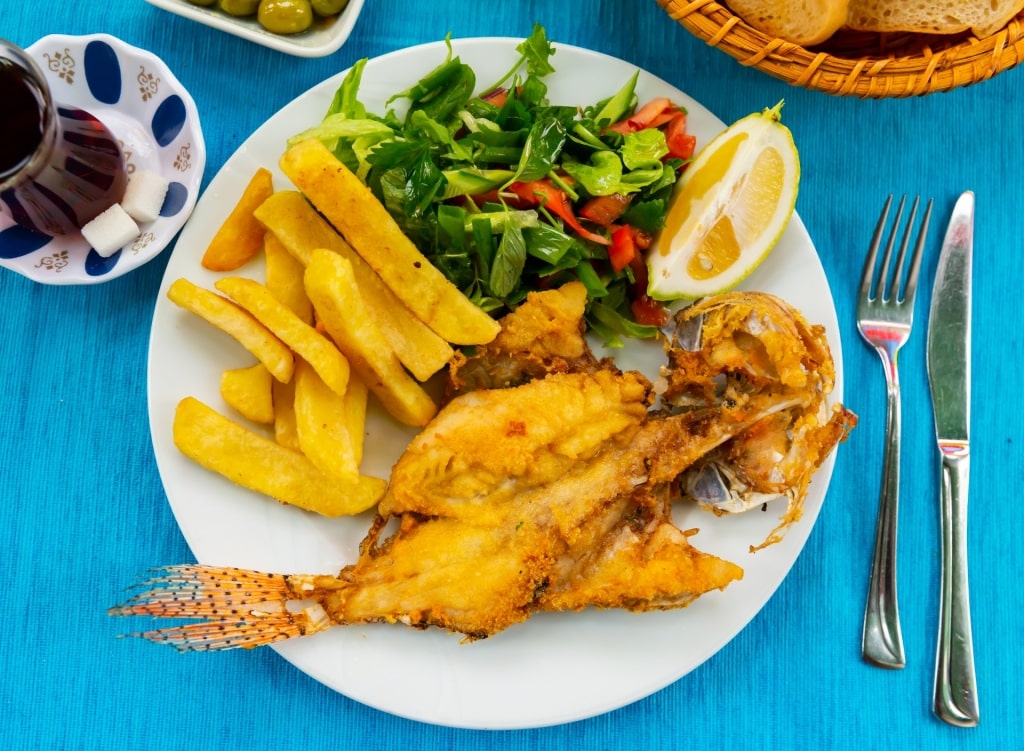
Lionfish
Lionfish is an invasive species that has spread throughout the Caribbean. Their aggressive territorial behavior is a real threat to coral reef ecosystems.
Fortunately, Grand Cayman chefs discovered that lionfish make excellent eating. Their white flesh is similar to grouper, excellent fried or even served as sushi.
The spines on lionfish are venomous and can cause an extreme reaction in humans. However, once the spines are removed properly, they are safe to eat—and doing so is a major help in controlling their numbers.
Lambi Conch
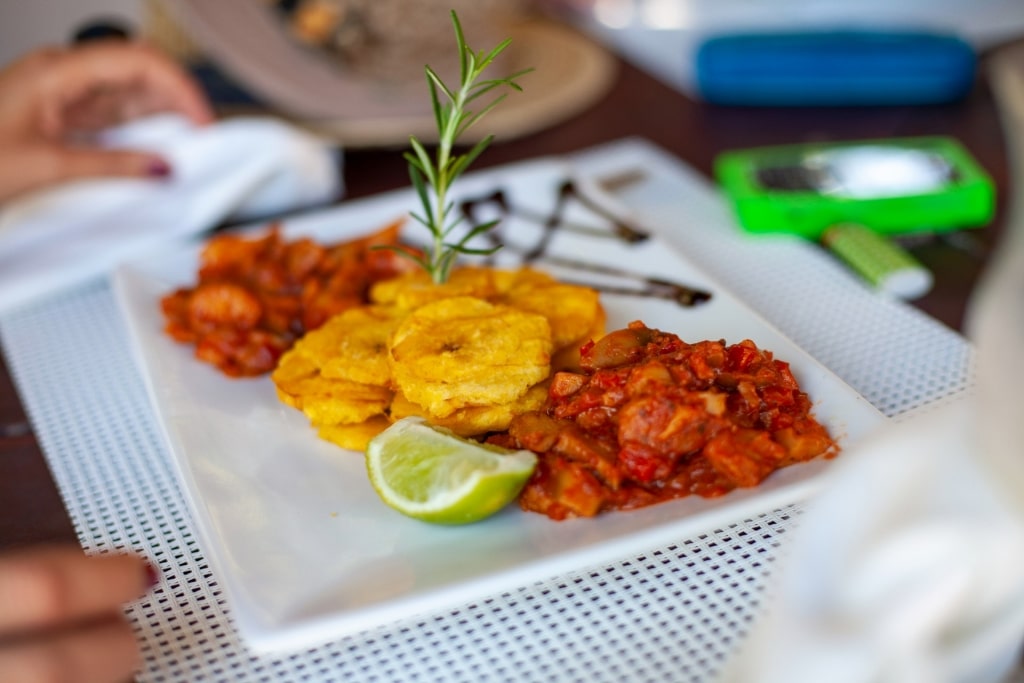
Lambi conch
St. Lucia loves its conch, a very large sea snail, which is bouncing back after being overfished. A popular food in St. Lucia is lambi, a traditional dish of chopped conch, boiled with carrots before serving with a curry sauce.
You will often find lambi served at St Lucia’s music “jump-ups”—street parties held on weekends. You might also find it served as a starter in restaurants.
Given the pressure on conch harvest, a common alternative at jump-ups is accra. This is a fried codfish cake, also rich in curry.
Read: The Ultimate St. Lucia Food Guide
Sopa Catracha De Mariscos Con Un
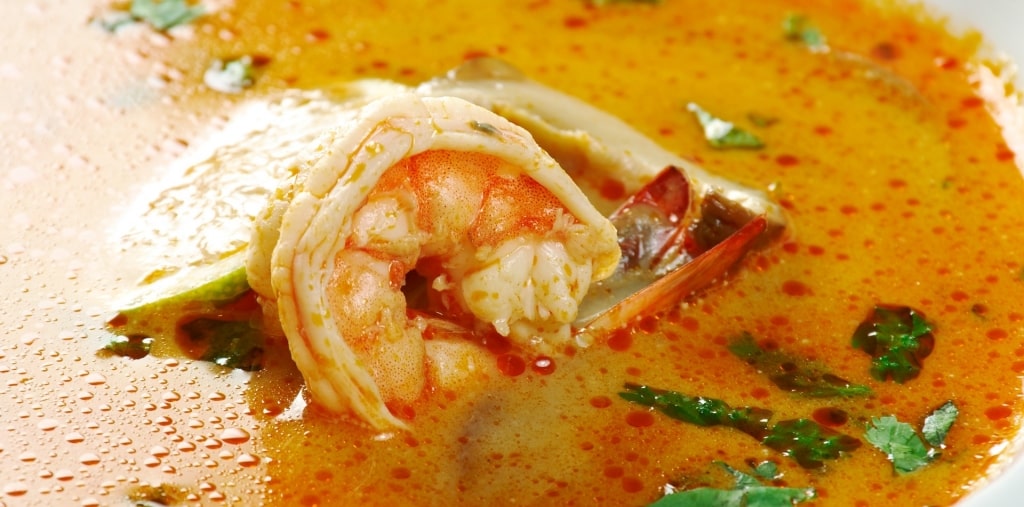
Sopa catracha de mariscos con un
This is a traditional Honduran seafood soup, often made with crabs. However, anything from shrimp through conch to fresh fish can be added.
One essential ingredient is coconut milk, and you’ll also find vegetables such as peppers, onions, and tomatoes. Worcestershire sauce, saffron, and achiote powder, add heat, and color.
Once garnished with avocado and lime slices, you’ll usually eat this with tortillas and rice. A dash of sugar in the stock brings an unexpected sweetness to the dish.
Ceviche
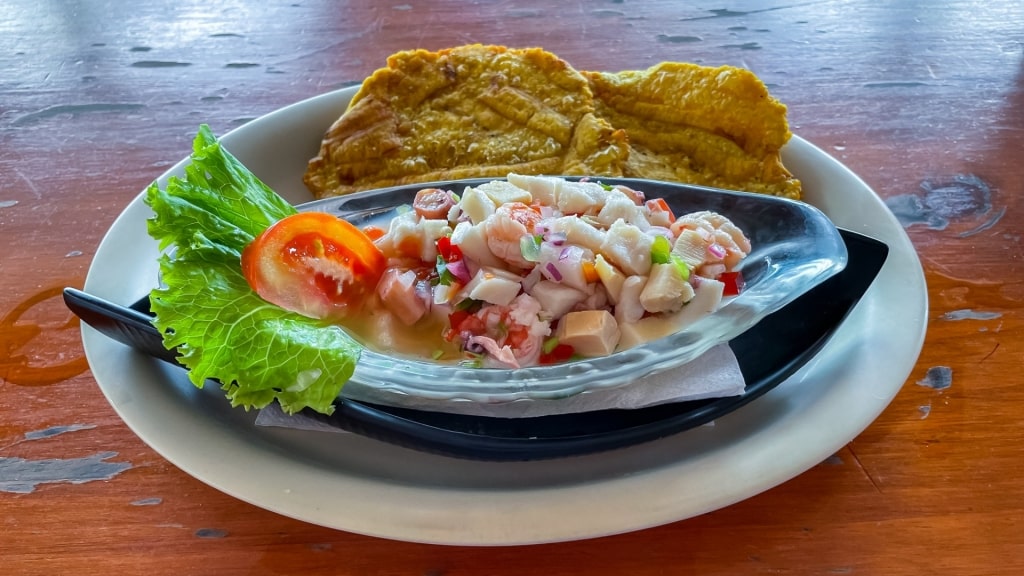
Ceviche
Ceviche is a dish that is found all along South America’s Pacific coastline, from Chile to Mexico. Long associated with Peru, it has found its way onto many restaurant menus in Puerto Rico.
Fish or other seafood (shrimp is popular in Puerto Rico) is “cooked” in a marinade based on lemon or lime. The addition of chilis, and other ingredients such as coriander or chopped onions, adds some heat.
One common local variation is the use of coconut milk in the marinade. Incidentally, one possible origin of the name ceviche is in the Spanish word escabeche—just like Jamaica’s Escovitch Fish.
Stewed Saltfish
The national dish of St. Kitts and Nevis is the result of a competition in 2003. Winner Jacqueline Ryan’s winning dish, based on a traditional recipe, is stewed salt fish with spicy green bananas, seasoned breadfruit, and coconut dumplings.
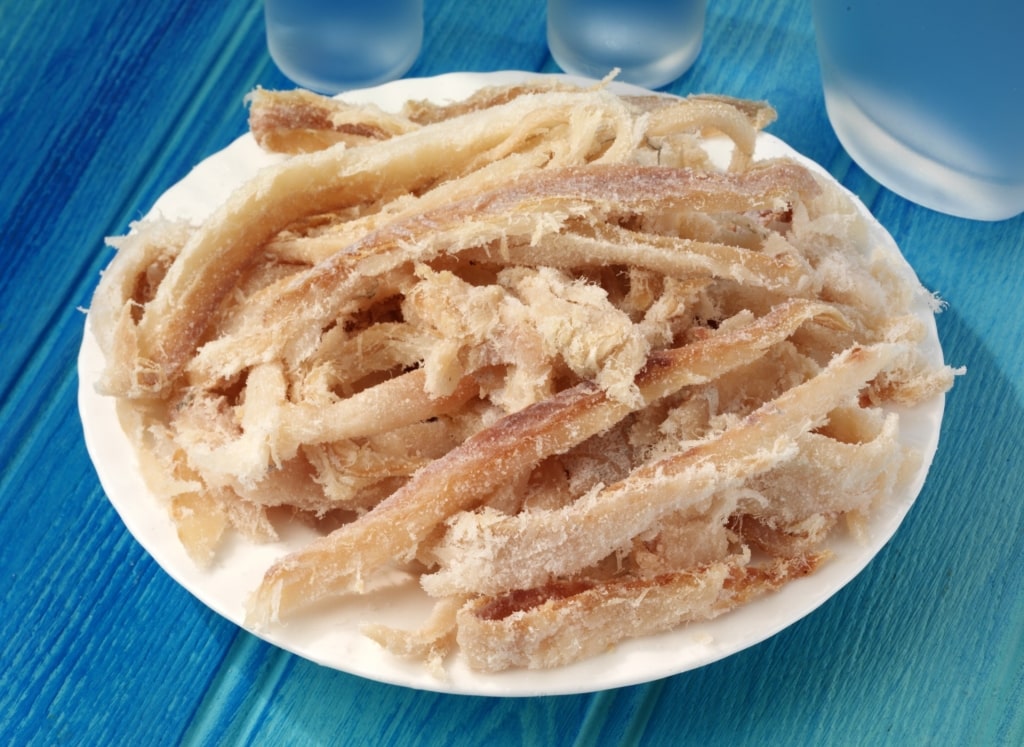
Saltfish
Saltfish is a white fish (traditionally cod) that is highly salted to preserve it. The fish is soaked in water to remove much of the salt before cooking and rehydrating it.
Unripe green bananas are called green figs in St. Kitts & Nevis, and several of the neighboring islands. They are boiled and peeled before serving with the well-seasoned fish.
Sea Eggs
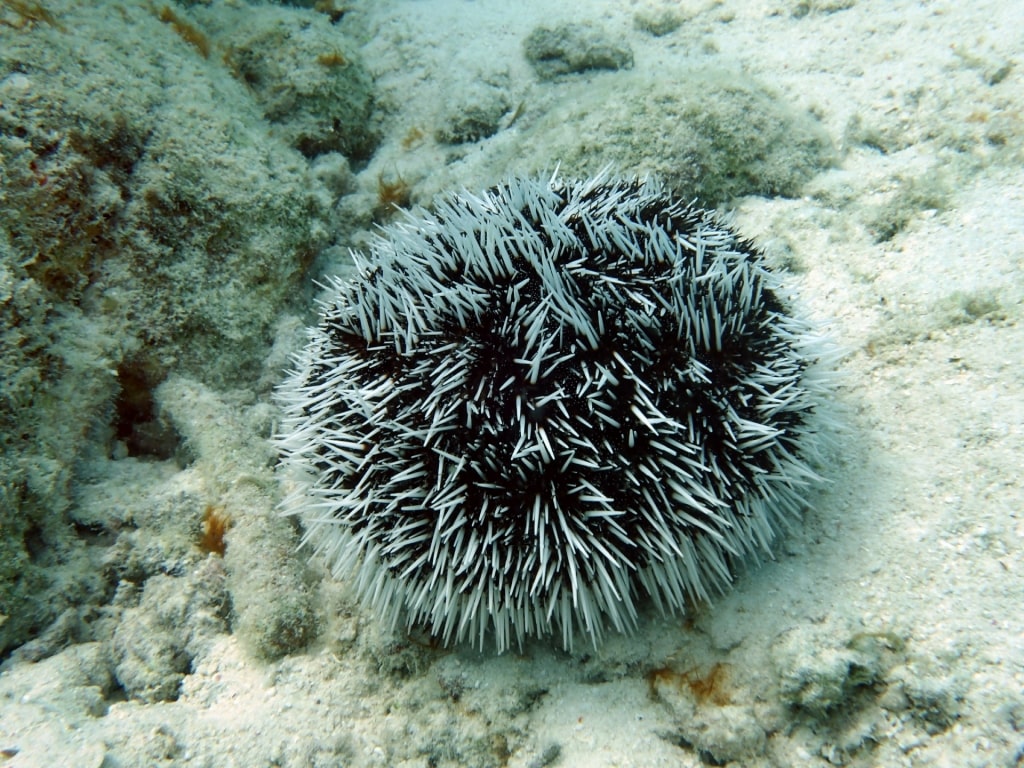
Sea eggs
Sea eggs is the name for a species of sea urchin found around the Caribbean, The Bahamas, and Florida. Once common in the waters of Barbados and Grenada, the population collapsed due to overfishing but is now recovering.
Sea eggs are a popular dish in Grenada, particularly for breakfast, and delicious with scrambled eggs. You can also find it fried up with sliced onions and carrots.
At other times of the day, it is traditionally steamed or fried before serving with white rice. Its deep, rich flavor is a good contrast with some sliced avocado or cucumber.
Pescado Frito
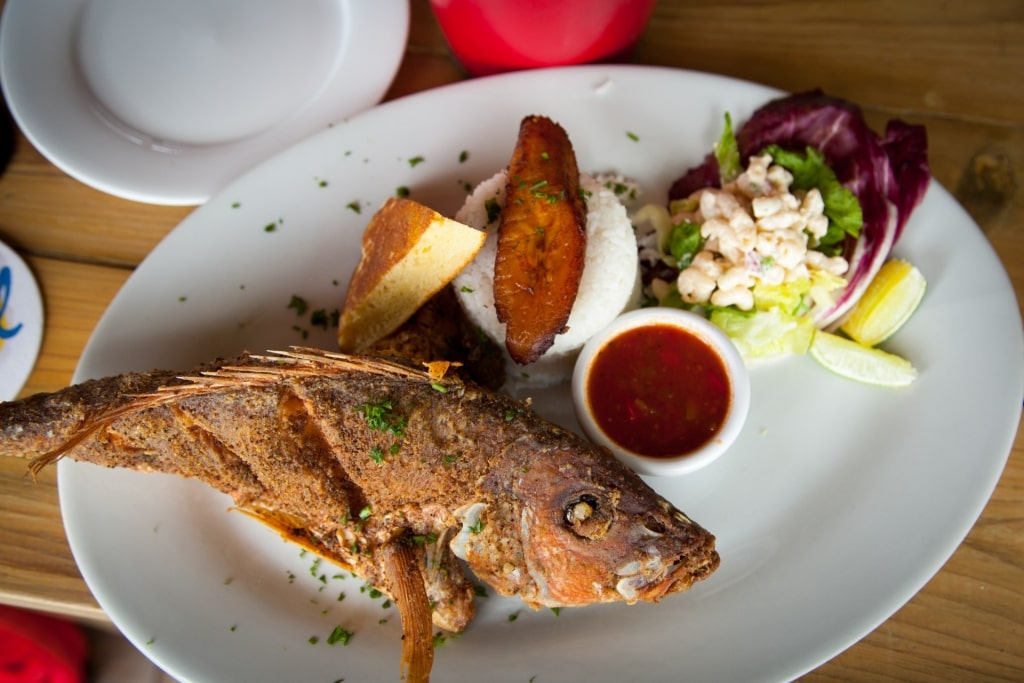
Pescado frito
Fried fish is one of those simple dishes that is easy to make badly. It is also an amazing dish if the fish is fresh and the cook knows what they are about—as is usually the case in Cozumel.
Grouper or red snapper are the most common fish. Grouper has a firm flesh that holds up well to frying, while Red Snapper has a sweeter taste.
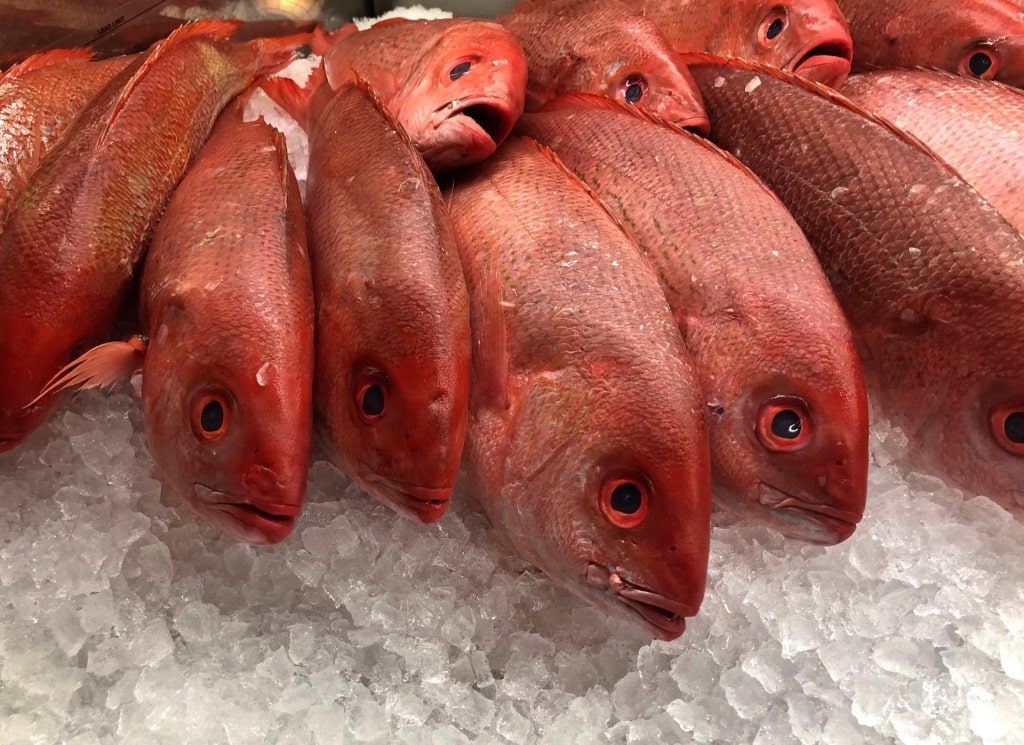
Red snapper
The whole fish is normally gutted, then seasoned with chills and lime as well as salt, pepper, and other spices. Often coated in breadcrumbs, it is then deep-fried until crispy.
Fish pieces can also be prepared in a similar way before serving in a taco. Garnishing will normally include salsa, guacamole, and slices of lime.
Crab Backs
Being split between France and the Netherlands, Saint-Martin/Sint Maarten is rich in the cuisine of both countries. It also has all the best in Caribbean seafood, and the region’s other cuisines to draw on for inspiration.
You can taste all that richness in the Crab Backs, a common dish here. Fresh crabmeat is mixed with tomato, onion, and seasoning, before being grilled in the original shell.
A breadcrumb topping adds another layer of flavor to the delicious whole. Don’t tell the French, but the “secret” ingredient that delivers some heat to the crab is usually Worcestershire sauce, from Britain.
Shrimp
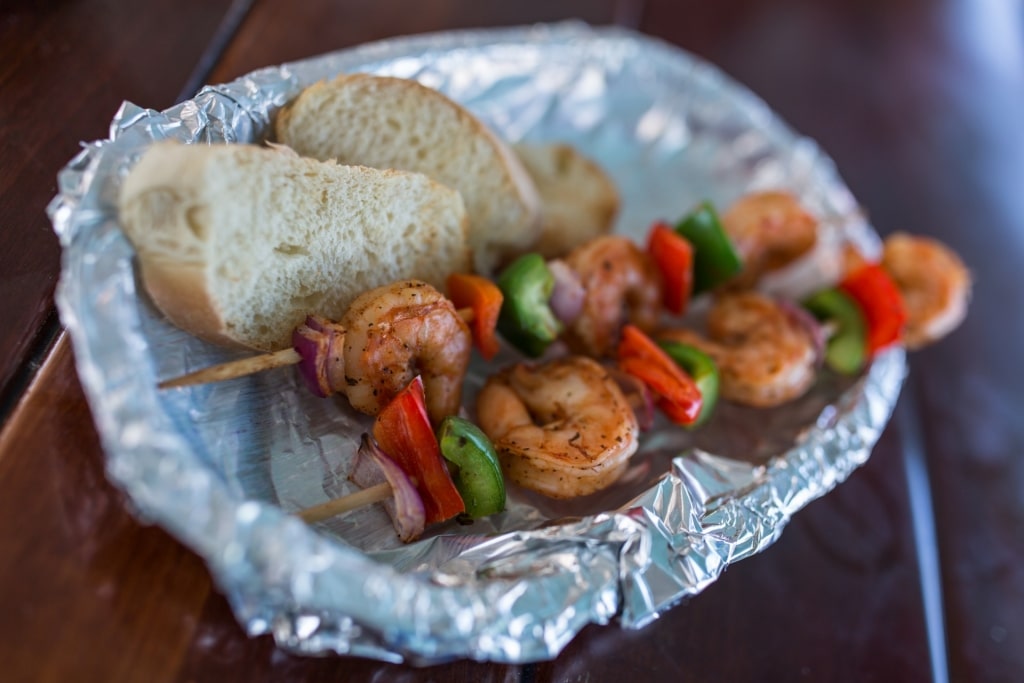
Shrimp
The clear waters and rich marine life of St. Lucia support good shrimp fishing and farming. You find these delicious crustaceans on the menu in many different forms.
One of the most popular is grilled shrimp skewers, but you can also expect dishes such as shrimp pasta, and spicy coconut shrimp.
St. Lucia, at one time a French colony, retains French influences in its cuisine. Creole-style sauteed shrimp, seasoned with lime, Worcestershire sauce, and garlic are a dish to look out for.
Mofongo de Pescado
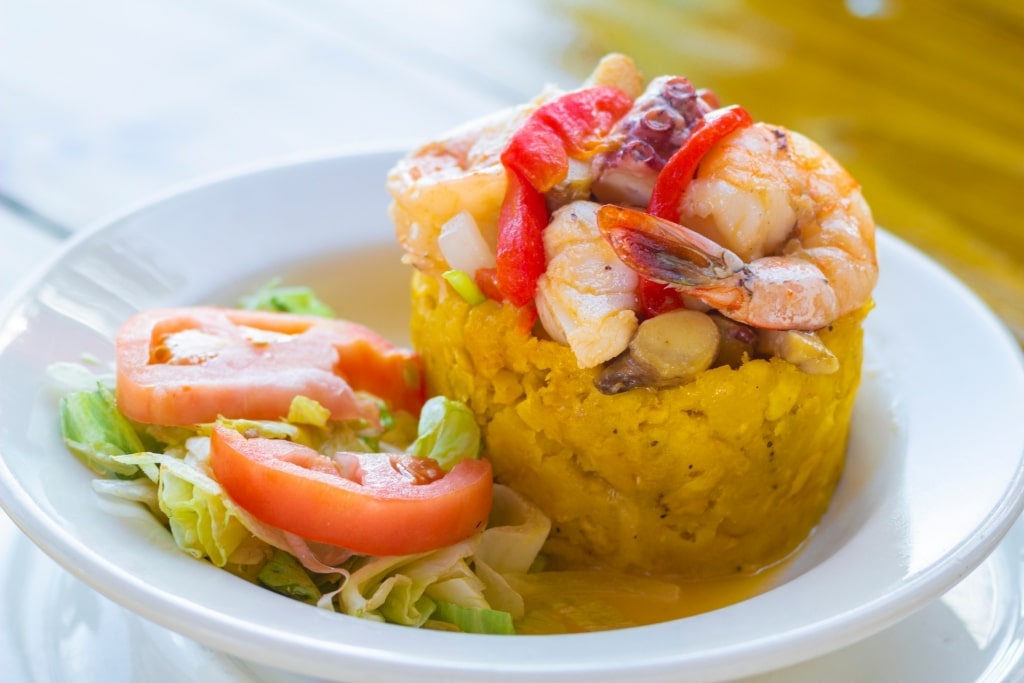
Mofongo de pescado
Mofongo is a dish of green (unripe) plantains, popular on many Caribbean islands. The fried plantains are mashed with garlic, and bits of chicharrón, or pork crackling.
A mound of mofongo is topped with anything from pork to seafood. One popular option is shrimp fried with tomato, onion, garlic, and lemon.
A similar garnish makes for mofongo de pescado, which can be made with any white fish. It is marinated with lemon juice, oregano, and paprika before being fried in oil.
Grilled Mahi Mahi
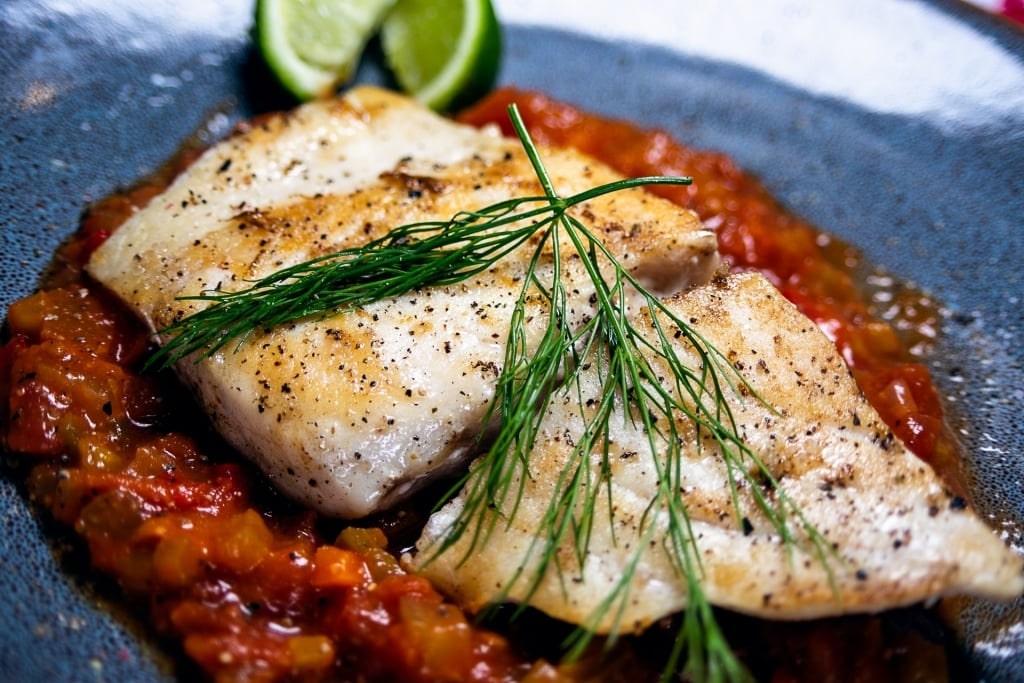
Grilled mahi mahi
Mahi mahi is a fish with firm, white/pink flesh that is usually grilled or baked. Cooked with the skin on, it keeps its shape well and has a mild, pleasant taste.
Growing up to six feet in length, they rarely weigh more than 30 pounds, but are popular with sport fishers in Florida’s Atlantic Coast. Mahi mahi are also found in the Caribbean Sea, especially around Barbados, where you can catch and eat your own.
A grilled mahi mahi sandwich, or a filet liberally seasoned with spices, is one of the tastiest Caribbean fish dishes. Expect to see a salsa made of ingredients such as mango, lemon juice, onion, and, of course, jalapeno pepper.
Chatou Water
Chatou Water is the Dominican name for octopus soup, made with chopped octopus, dumplings, and a mix of vegetables. It is generally accompanied by a slice of garlic bread.
You may be familiar with goat water (goat stew), the national dish of Montserrat, but popular on many other Caribbean islands. Said to be a variation of Irish Stew, it adds hot green pepper and lots of other tropical flavorings.
Chatou Water is a variation that replaces the goat with octopus, or sometimes squid. The stewing process tenderizes the meat, with plenty of herbs, spices, and vegetables to produce a rich, tasty broth.
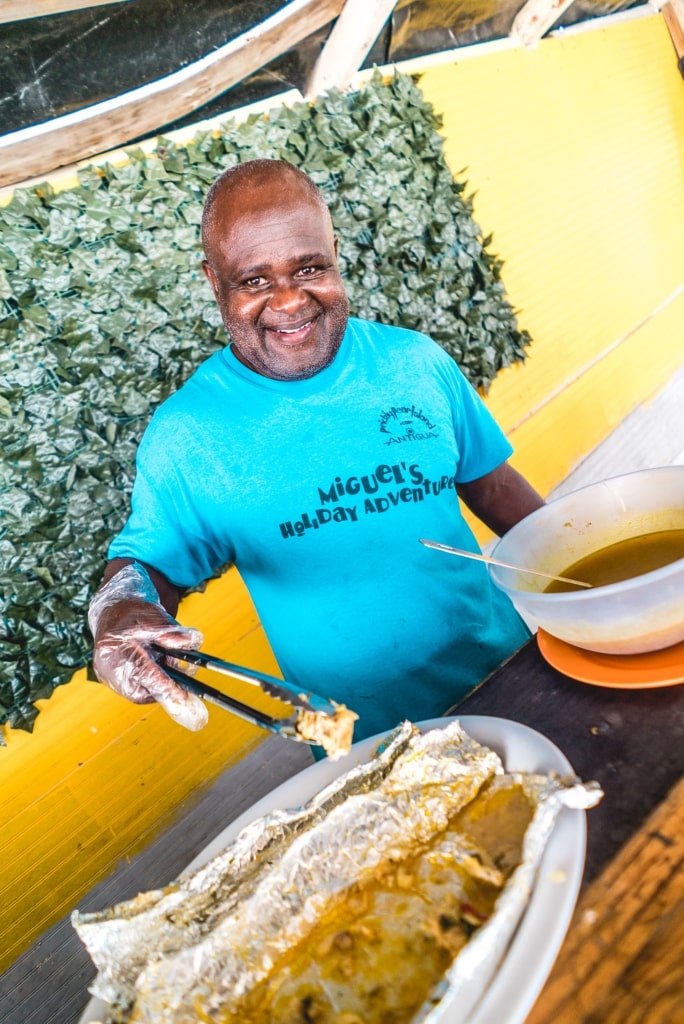
Antigua
Has the thought of the best Caribbean seafood dishes tempted you to eat your way around these lovely islands? Then browse our Caribbean cruises to find the perfect foodie getaway.
